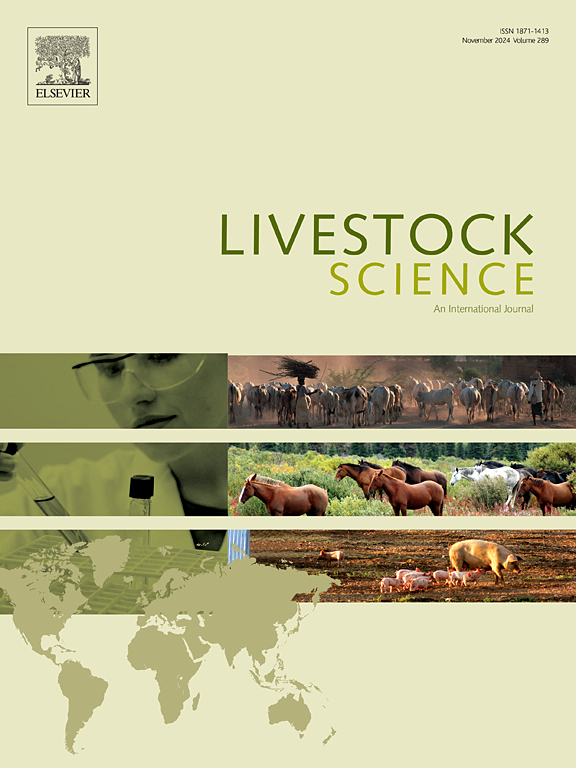饲粮中添加43%的菜籽粕对瘤胃参数和苜蓿干草的降解特性均无负面影响
IF 1.8
3区 农林科学
Q2 AGRICULTURE, DAIRY & ANIMAL SCIENCE
引用次数: 0
摘要
对甘蔗和体外实验结果的解释需要谨慎进行,因为许多变量,如饮食,会影响降解速率和降解动力学。饲喂4只瘤胃瘘管供体阉牛,饲料以低品质谷物粗饲料为基础,其中油菜籽粕的添加水平为四种之一,即DM含量为0%(对照)、13%、27%或43%。采用甘蔗和Ankom Daisy™体外培养两种降解方法,测定了地面苜蓿干草(标准苜蓿)在72 h内的降解动力学。0.05)对地面紫花苜蓿标准品降解的影响,无论采用哪种培养方法。瘤胃平均NH3-N浓度升高(P <;0.001),而总挥发性脂肪酸浓度和摩尔比在微生物合成的正常范围内。平均瘤胃pH不受影响(P >;0.05),且不低于6.3,说明在低质量基础日粮中添加43%的油菜籽粕是安全的。本文章由计算机程序翻译,如有差异,请以英文原文为准。
Supplementing steers up to 43 % canola meal had no negative effects on either ruminal parameters or the degradation characteristics of lucerne hay
Interpreting in sacco and in vitro results needs to be undertaken with caution, as many variables, such as diet, can influence the rate of degradation and degradation kinetics. Four ruminal fistulated donor steers were fed rations based on low quality cereal roughages with one of four inclusion levels of canola meal, viz. 0 % (control), 13 %, 27 % or 43 % on a DM basis. Two degradation methods, in sacco and in vitro Ankom Daisy™ incubation, were used to determine the degradation kinetics of ground lucerne hay (lucerne standard) over 72 h Supplementing donor steers up to 43 % canola meal had no negative (P > 0.05) effects on the degradation of the ground lucerne standard, regardless of which incubation method was used. The average ruminal NH3-N concentration increased (P < 0.001) with increasing levels of canola meal in the ration, while total volatile fatty acid concentrations and molar proportions were within the normal range for microbial synthesis. Average ruminal pH was not affected (P > 0.05) by the ration fed to the steers and did not decrease below 6.3, indicating canola meal was safe to include at 43 % in a basal, low-quality ration for cattle.
求助全文
通过发布文献求助,成功后即可免费获取论文全文。
去求助
来源期刊

Livestock Science
农林科学-奶制品与动物科学
CiteScore
4.30
自引率
5.60%
发文量
237
审稿时长
3 months
期刊介绍:
Livestock Science promotes the sound development of the livestock sector by publishing original, peer-reviewed research and review articles covering all aspects of this broad field. The journal welcomes submissions on the avant-garde areas of animal genetics, breeding, growth, reproduction, nutrition, physiology, and behaviour in addition to genetic resources, welfare, ethics, health, management and production systems. The high-quality content of this journal reflects the truly international nature of this broad area of research.
 求助内容:
求助内容: 应助结果提醒方式:
应助结果提醒方式:


